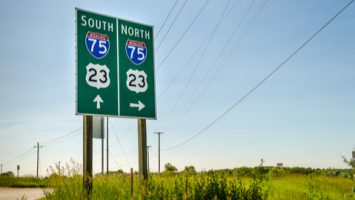
MIT professor Eran Ben-Joseph once estimated that all of the parking lots in the US, if connected, would be able to cover Puerto Rico. “In some cities, like Orlando and Los Angeles,” Ben-Joseph stated,” parking lots are estimated to cover at least one-third of the land area, making them one of the most salient landscape features of the built world.”
Fortunately, a number of innovative projects are being designed in order to reduce this wasted space that produce heat islands and creates polluted run-off water.
In Boulder, Colorado, Park Plus technology transports cars via robotic dollies, which transfer them to small cubby spaces in the garage’s storage vault.
The Willoughby Square project in downtown Brooklyn has also made automated parking part of its plan. Beneath a one-acre public park will be a subterranean garage capable of accommodating 700 vehicles.
“Drivers will pull their cars into one of twelve entry rooms, where plasma screens, mirrors and laser scanners help direct the vehicle into the correct position,” writes Julie Satow, The New York Times.
Light sensors and cameras will record the car’s dimensions before it’s lowered into a tightly designed parking vault. To exit, a series of automated hoists will return the vehicle from the bay.
In many cities, solar canopies have been constructed parking lots, allowing for the ability to charge electric cars on the spot, generate energy, and cut down on the urban heat island effect generated by miles of blistering tarmac. Green paving solutions, such as porous asphalt, allow water drain into the soil below, reducing polluted run-off and erosion.
Parking lots and garages are also being transformed into multi-use cultural spaces. In London, the Peckham Multi-Storey Car Park has been re-purposed as an art gallery, rooftop bar, and event space. Lisbon’s Park Bar is located on the roof of an active parking garage, and New York City has ‘Shakespeare in the Parking Lot.’


